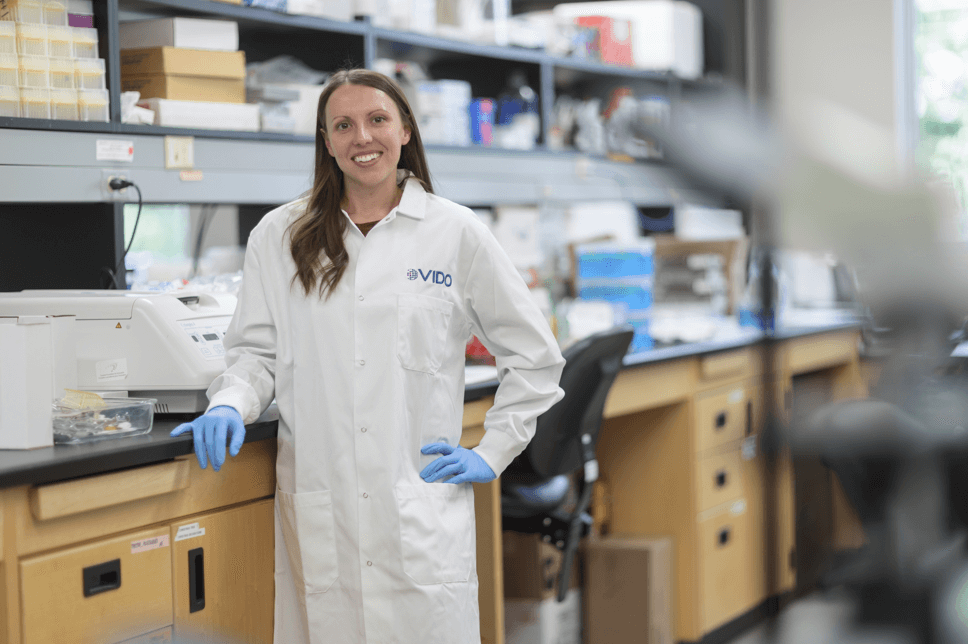
Ticks on the move: how VIDO scientists are tackling the spread of Lyme disease
Lyme disease is becoming a growing threat — even in places like Saskatchewan. At VIDO, Dr. Jenny Wachter is uncovering how the Lyme-causing bacterium survives and spreads, laying the groundwork for better detection, treatment, and prevention.
By Caitlin GillAs climate change brings warmer temperatures into Canada, tiny but dangerous hitchhikers are expanding their reach — bringing with them a growing public health threat.
Because of these rising temperatures, blacklegged ticks, known for spreading Lyme disease, are being found further north than ever before, including parts of Saskatchewan where they were once rare. At the University of Saskatchewan’s (USask) Vaccine and Infectious Disease Organization (VIDO), scientist Dr. Jenny Wachter (PhD) is leading research to better understand how Lyme disease-causing bacteria work and how we can fight back.
"Ticks are moving into new regions because of climate change. That means more people and pets are at risk of getting Lyme disease," says Dr. Wachter.
Lyme disease is caused by a sneaky, spiral-shaped bacterium called Borrelia burgdorferi, which ticks can pick up from infected animals like mice or birds. They can then pass it to people through a bite. Once inside the body, the bacteria can move around and cause problems in different parts of the body. People affected by Lyme disease might feel extremely tired, have aching, swollen joints (known as Lyme arthritis), or even develop heart and nerve issues.
Dr. Wachter’s research focuses on how this tricky bacterium survives in the tick, changes its behavior once inside the human body, and manages to hide from our immune systems. Her team is also exploring how viruses that infect bacteria, called bacteriophages, might influence Lyme disease. These viruses could hold the key to new treatments or ways to prevent infection.
“We’re looking at the biology of the bacteria on a molecular level,” explains Dr. Wachter. “The more we understand how it adapts and survives, the better we can design tools to stop it.”
In 2009 there were 144 cases of Lyme disease in Canada. Preliminary data from Canada’s public health website estimates a dramatic increase to 5,239 reported cases in 2024 — roughly a 3500 per cent increase and a stark reminder that the disease is becoming an urgent and growing public health concern. As ticks continue to expand into new regions and cases rise, the need for better tools to manage Lyme disease is more critical than ever.
VIDO’s research is laying the groundwork for more accurate diagnostics, targeted treatments, and even new vaccine approaches. The goal is to develop better ways to detect, prevent, and eventually treat Lyme disease to protect people, animals, and communities across the country.
This work not only helps prepare for the current threat but could also future-proof Canada’s public health defenses against other tick-borne illnesses that may emerge as the climate continues to change.
“Lyme disease isn’t just an issue for the eastern provinces anymore,” says Wachter. “It’s here. It’s growing. And we need to be ready.”

